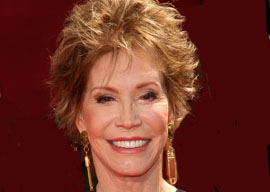
January 31, 2017

Mary Tyler Moore
Source: Bigstock
(Or even a marytylermooresapartment: Ironically, Moore never lived on her own, not truly, until she separated from MTM producer Grant Tinker, at age 42.)
Indeed, most women aren”t cut out for careers, as I bitched only one column ago. (Don”t get me started on voting…) Alas, The Mary Tyler Moore Show made having one look so goddamn attractive and accessible.
I just didn”t get it. Being working-class, the women in my family already worked, long before it was cool, albeit in jobs short on witty repartee and groovy outfits. And hadn”t anyone else ever seen a movie? What about Joan Crawford’s “shopgirls,” or even the uniformly beautiful brunet “lady scientists” in every other B-movie “creature feature”? (Seriously, these characters all look so similar that you”d think there was a lost “origin story” sci-fi flick about how they were all really clones…)
No, I was more impressed, and felt more validated, by Mary Tyler Moore’s most famous big-screen characterization, the grieving mother Beth in 1980’s Ordinary People.
Cold, rigid, bitter, fastidious”celluloid Martha Stewarts”there are few “Beths” in American cinema: Crawford’s eponymous character in the curio Harriet Craig; Miriam Hopkins” “Millie” in Old Acquaintance; and later, Annette Bening’s “Carolyn” in American Beauty, and Kathleen Turner in Serial Mom.
Critics called Mary Tyler Moore’s performance “brave,” a kinder synonym for “career suicide.” Beth was the anti-“Mary”: wife and mother, yes, but not typically maternal, to put it mildly. Moore was stung by the consensus that Beth was a bitch on wheels, because her true personality was closer to that character’s than the sunny, spunky girls she”d played to fame and fortune:
Beth’s a product of her upbringing, which is a very self-disciplined way of dealing with life. She’s very orderly, very ordered; she believes very strongly in the strength of the family and in being the matriarch of that family, and that if problems arise, you deal with them with dispatch. There’s a great deal about that to admire. That’s what I hung onto in playing Beth. I like Beth.
I wouldn”t say “like,” but I seem to be alone in my reading of the character as justifiably angry: at her favorite son for dying, and her (probably unplanned) younger one for being “responsible” and then trying to die too. Temperamentally masculine, she’s nevertheless dutifully performed midcentury American femininity her whole life”the perfect hair, home, and smile”but can”t, won”t, dammit, express feelings she doesn”t have.
But of course, Mary Tyler Moore will always be best remembered as the warm, lovable woman she played on the small screen.
I always saw myself more as Hazel Frederick. A middle-aged Minneapolis mom”back when “middle-aged mom” meant you tied a scarf around your head to keep your already lacquered hair from, improbably, blowing around”who happened to be shopping downtown the day Mary was filmed tossing her beret in abandon, Hazel was freeze-framed, casting what looks like a disapproving scowl at the skinny, stunning young woman spinning in the middle of the street.
World-famous but nameless, Frederick finally introduced herself to Mary Tyler Moore at a book signing, and explained, needlessly, of course, that she hadn”t been particularly crabby that morning, just, understandably, surprised.
I wish she hadn”t. I preferred the idea that this grim babushka lady, lower left”like a Victorian ectoplasm, but real”was the specter of old-fashioned womanhood, being reduced to a forever blur by the ever-multiplying Marys in her midst.